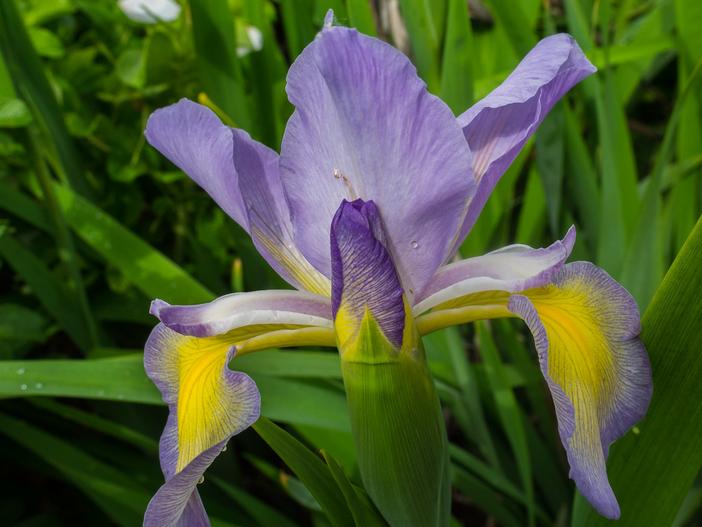Blue Flat
(Iris spuria)
Blue Flat (Iris spuria)
/
/

F. D. Richards
CC BY-SA 2.0
Image By:
F. D. Richards
Recorded By:
Copyright:
CC BY-SA 2.0
Copyright Notice:
Photo by: F. D. Richards | License Type: CC BY-SA 2.0 | License URL: https://creativecommons.org/licenses/by-sa/2.0/ | Uploader: F. D. Richards | Publisher: Flickr






























































Estimated Native Range
Summary
Iris spuria, commonly known as Blue Flag, is a rhizomatous perennial herb native to wet meadows, salt marshes, and riversides in Europe and West Asia. It typically grows to a height of 70-120 cm (28-47 in) with a spread of up to 90 cm (35 in). The plant features large, showy flowers that are usually purple or lilac, with a faint scent, blooming from late spring to early summer (May to July). The slender, elongated leaves form a fan-like structure that adds to its ornamental value.
Blue Flag is valued for its striking flowers and ability to form dense clumps, making it an excellent choice for mass plantings in garden borders or as a cut flower for arrangements. It is relatively easy to grow and maintain, being hardy across a wide range of climates (USDA Zone 3 to Zone 9, European Zone H2). While it thrives in well-drained, humus-rich soils, it is also tolerant of wet, saline conditions, making it versatile for various garden settings. Full sun to partial shade is preferred, with reduced flowering in shadier spots. It is important to provide ample water during the spring, though it requires less moisture during hot, dry summers. Care should be taken to avoid disturbing the roots, as this can negatively affect the plant. Potential problems include iris borers and root rot in overly wet conditions.CC BY-SA 4.0
Blue Flag is valued for its striking flowers and ability to form dense clumps, making it an excellent choice for mass plantings in garden borders or as a cut flower for arrangements. It is relatively easy to grow and maintain, being hardy across a wide range of climates (USDA Zone 3 to Zone 9, European Zone H2). While it thrives in well-drained, humus-rich soils, it is also tolerant of wet, saline conditions, making it versatile for various garden settings. Full sun to partial shade is preferred, with reduced flowering in shadier spots. It is important to provide ample water during the spring, though it requires less moisture during hot, dry summers. Care should be taken to avoid disturbing the roots, as this can negatively affect the plant. Potential problems include iris borers and root rot in overly wet conditions.CC BY-SA 4.0
Plant Description
- Plant Type:
- Height: 2-5 feet
- Width: 2-3 feet
- Growth Rate: Moderate
- Flower Color: Blue, Orange, Purple, Red, White, Yellow
- Flowering Season: Spring, Summer
- Leaf Retention: Deciduous
Growth Requirements
- Sun: Full Sun
- Water: Medium
- Drainage: Fast, Medium
Common Uses
Bee Garden, Bird Garden, Butterfly Garden, Deer Resistant, Drought Tolerant, Hummingbird Garden, Rabbit Resistant, Rock Garden, Salt Tolerant, Showy Flowers
Natural Habitat
Native to wet meadows, salt marshes, and riversides in Europe and West Asia
Other Names
Common Names: Butterfly Iris , Seashore Iris , Blue Iris , Butterfly Iris , Blå Iris , Steppen-Schwertlilie , Wiesen-Schwertlilie , Iris Des Steppes , Dansk Iris , Blå Svärdslilja
Scientific Names: Iris spuria , Chamaeiris spuria , Xyridion spurium , Limniris spuria , Xiphion spurium
GBIF Accepted Name: Iris spuria L.